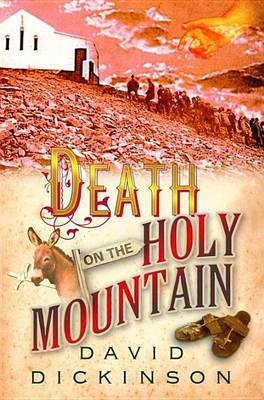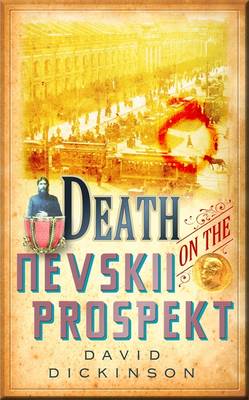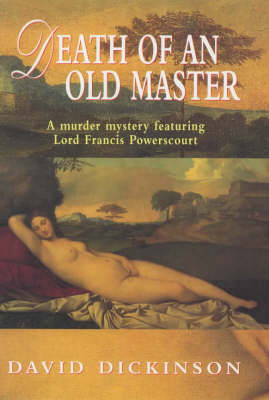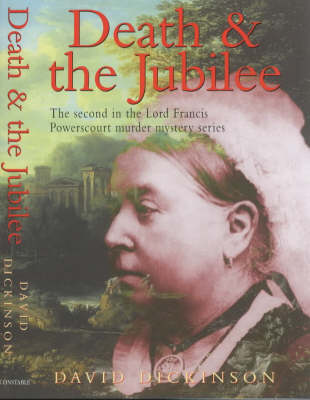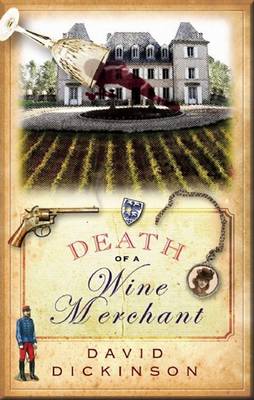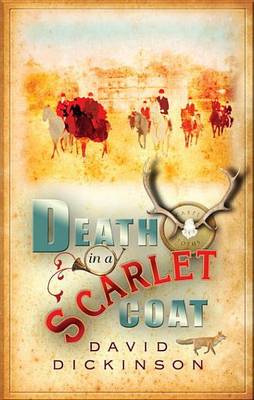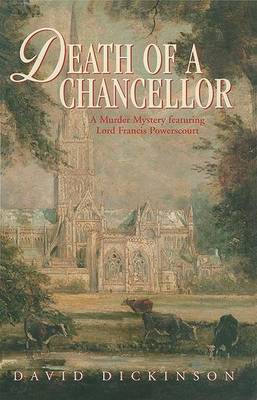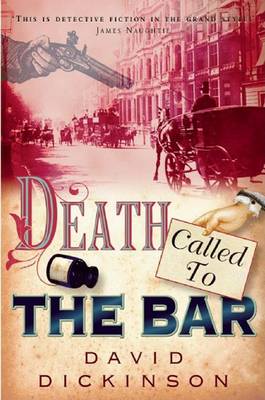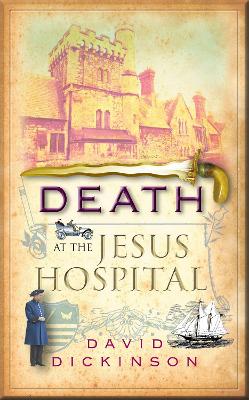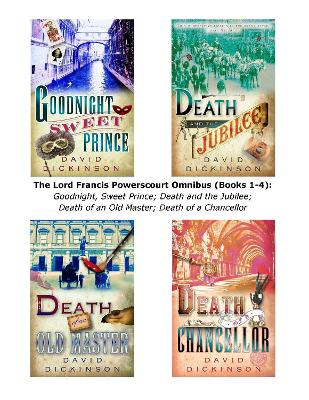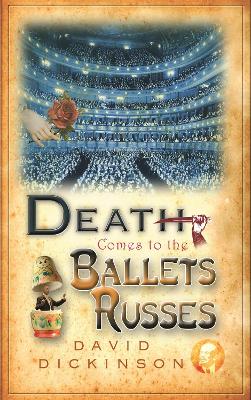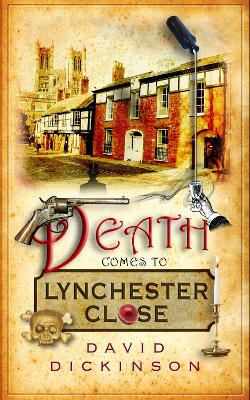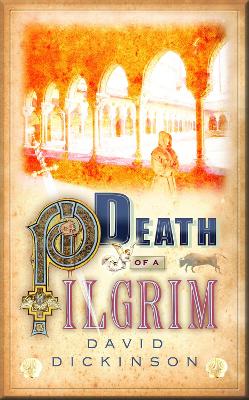Lord Francis Powerscourt
15 total works
An unwelcome guest - Death - gatecrashes a society wedding and Lord Francis Powerscourt is summoned by his barrister friend, Charles Augustus Pugh, to investigate this most singular case of murder in the Fens.
The dead man is Randolph Colville, successful wine merchant and father of the groom. The murderer would appear to be his brother Cosmo, found in the same room with a gun in his hand. But is this simply a modern-day version of Cain and Abel, or is there more to it than that? Cosmo isn't speaking and time is running out for him for he has an appointment with the gallows in two weeks.
Francis has to act fast and sets out to discover all he can about the dead man - and his brother. Cosmo's silence is bothering him for it can only be for two reasons; either he is protecting a woman - or a family scandal. His investigations take him to the vineyards and towns of Burgundy, where he uncovers evidence of serious malpractise in the Colville wine trade, bitter rivalry with a London-based competitor and a disgruntled ex-employee bent on revenge. But there is another secret - more terrible and shocking than anything gone on before - which finally reveals the motive for the untimely death of a wine merchant.
Praise for David Dickinson:
'Splendid entertainment' Publishers Weekly
'A leisurely period whodunit with Dickinson's customary historical tidbits and patches of local color, swathed in an appealing Victorian narrative' Kirkus Reviews
'Detective fiction in the grand style' James Naughtie
'A cracking yarn, beguilingly real from start to finish' Peter Snow
Master of the Hunt, the fifteenth Earl of Candlesby, has come to lead his riders once again. But this time he comes as a corpse, wrapped in blankets across his horse, a corner of his scarlet coat visible in the morning mist. Only three people see the body. One dies. Another vanishes. Now only one man knows how he was killed. Powerscourt is summoned to investigate murder in a crumbling house where the paper is peeling off the walls and the stuffed owls each only have one leg.
The estate is virtually bankrupt as Powerscourt uncovers a world of jealousy, revenge and hatred, where the sons are as dissolute and dangerous as the father. The fifteenth earl had left a trail of duels, theft and adultery across the flatlands of Lincolnshire. It takes another death and a deadly chase under the crumbling estate before Powerscourt unlocks the secret of death in a scarlet coat.
Praise for David Dickinson:
'Splendid entertainment' Publishers Weekly
'Detective fiction in the grand style' James Naughtie
'Beguilingly real from start to finish... you have to pinch yourself to remind you that it is fiction - or is it?' Peter Snow
'Dickinson's customary historical tidbits and patches of local colour swathed in... appealing Victorian narrative' Kirkus Reviews
With narrative skill and a real understanding of the period, David Dickinson takes us once again into a past that is in many ways more exciting and more dangerous than our own time.
The first man murdered was Abel Meredith, a resident at the Jesus Hospital Almshouse near London.The second victim, Roderick Gill, was burser at the Allison's school in Norfolk. Victim number three, Sir Rufus Walcott, was slain in his own hall by the Thames. All had their throats cut.And all had strange markings on their chests, carved there by the murderer but which neither doctor nor coroner could identify.
Lord Francis Powerscourt, brought in to solve this case of triple murder, had no shortage of suspects or suspicions.Meredith had shadowy links with the civil service. Gill, a man who seduced women at church during Harvest Festival or the Christmas carol service, had been threatened by angry husbands and disinherited sons while Sir Rufus had wiped fifteen years out of his own past history.And all had ties to Sir Peregrine Fishbourne, Prime Warden of the Guild of Silkworkers, who had visited all three men shortly before their untimely deaths. Yet on one question Powerscourt never wavered, and he knew that only when he had solved the mystery of the strange markings on the victims' bodies would he then be able to solve the mystery of the death at the Jesus Hospital.
Praise for David Dickinson:
'Splendid entertainment' Publishers Weekly
'A leisurely period whodunit with Dickinson's customary historical tidbits and patches of local color, swathed in an appealing Victorian narrative' Kirkus Reviews
'Detective fiction in the grand style' James Naughtie
'A cracking yarn, beguilingly real from start to finish' Peter Snow
Goodnight, Sweet Prince
Mystery surrounds the death of Queen Victoria's grandson England, 1892.
Victoria, Queen and Empress, is in the 54th year of her reign, when her grandson Prince Eddy, eldest son of the Prince of Wales, is found slaughtered in his bed at Sandringham. Terrified of more royal scandal, the Prince of Wales and his spindoctors decide to cover up the facts and the murder is disguised as death by influenza.
Lord Francis Powerscourt, an Irish investigator, is privately asked to find the killer. His quest takes him on a journey through the prince's debauched and dissolute past, across Europe to the misty waterways of Venice where, amidst scandal and suicide, Powerscourt finally unravels themystery of the sweet prince's last goodnight.
Death and the Jubilee
The discovery of a headless corpse jeopardises Queen Victoria's glittering Diamond Jubilee!
In this second Lord Francis Powerscourt mystery, London is preparing for the 1897 Diamond Jubilee. But one morning a man's corpse with no head or hands is dragged out of the Thames. He is old, but not destitute. With no clues to his identity, the police ask for Powerscourt's assistance. His investigation leads to a mysterious mansion in Oxfordshire, with classical temples in the gardens and in the house a second corpse, killed in a fire. On the track of the murderer, Powerscourt soon realises that both he and his family are in great danger - and so is the Queen's Jubilee . . .
Death of an Old Master
In May 1901 the Salisbury Galleries announce the biggest exhibition of the Old Master Paintings ever seen in Europe. Excitement is intense. But before it opens, one of Britain's leading art experts, Christopher Montague, is found murdered in his study. When Lord Francis Powerscourt is called in to investigate he finds every book, notepad and scrap of paper has been removed from the scene of the crime. Montague had been working on something that would have rocked the art world. Did his article that claimed a number of the Old Masters had been painted recently by a single hand have anything to do with his death? Powerscourt embarks on an odyssey through a treacherous world of art dealers and picture restorers in pursuit of a master forger. He travels to Sicily where the trail goes cold, but, after the thrills and danger of that wild, lawless isalnd, in a remopte corer of England, the truth is finally revealed.
Death of a Chancellor
Compton Minster is preparing to celebrate a very special anniversary in the year 1901 - a thousand years of Christian worship. But a few weeks before the main ceremonies, a high official of the cathedral, the chancellor, dies in mysterious circumstances, and no on except the doctor and the undertaker is allowed to view the corpse. It then transpires that the chancellor was one of England's richest men. When his sister suspects foul play, Lord Francis Powerscourt is asked to investigate. As Powerscourt paces the ancient cloisters and listens to evensong from the choir stalls, he begins to suspect that a terrible secret lies hidden in the cathedral, one that may have someting to do with the anniversary. Then a chorister is strangles, his body found turning on the great spit in the Vicars Hall kitchen. Powerscourt himself escpaes death by a whisker, as does his wife, Lady Lucy, before he uncovers the astonishing secret of Compton Minster and unmasks a murderer.
The British Museum in Bloomsbury is home to one of the Caryatids, a statue of a maiden that acted as one of the six columns in a temple which stood on the Acropolis in ancient Athens. Lord Elgin had brought her to London in the nineteenth century, and even though now she was over 2,300 years old, she was still rather beautiful - and desirable.
Which is why Lord Francis Powerscourt finds himself summoned by the British Museum to attend a most urgent matter. The Caryatid has been stolen and an inferior copy left in her place. Powerscourt agrees to handle the case discreetly - but then comes the first death: an employee of the British Museum is pushed under a rush hour train before he and the police can question him.
What had he known about the statue's disappearance? And who would want such a priceless object? Powerscourt and his friend Johnny Fitzgerald undertake a mission that takes them deep into the heart of London's Greek community and the upper echelons of English society to uncover the bizarre truth of the vanishing lady...
London, 1912, and the famed Ballet Russes have come to London to perform. Anticipation is high, for Diaghilev’s troupe is renowned throughout Europe.
At the end of their famed performance of Thamar at the Royal Opera House, the Georgian queen stabs her prince to death and throws him into the river. But life mirrors art when the prince is found truly dead, stabbed through the heart in the orchestra pit below stage. But the corpse is not the dancer in the programme. It is his understudy. Powerscourt is summoned to investigate. But who was the intended victim – the understudy, or the star of the Ballets Russes?
And the Ballet Russes are not the only Russian visitors in London this season. Lenin, Europe’s most dangerous revolutionary, has sent some bank robbery money to be changed into pounds. There are stolen jewels from St Petersburg to be sold. And there are other darker forces abroad too and Powerscourt has to look death in the face before he can solve the mystery of Death at the Ballet Russes
Lord Francis Powerscourt is visited at home in London by the Bishop of Lynchester who wants his advice about the suspect for the death of an aged parishioner. Powerscourt advises that discretion rather than accusation is the best way forward, but this is just the start of his association with the diocese of Lynchester.
The death of the parishioner has left available a property in the cathedral close which traditionally the church rents out to a suitable tenant. Four worthy candidates are nominated . . . and then one of them, the retail king of the south of England, is found dead in the house, poisoned by strychnine. So once again Powerscourt is summoned by the bishop as this time there is no doubt of foul play.
But there are many suspects from which to choose - there are the other candidates who want to live in that very desirable property . . . or could it be more complex than that? Very soon Powerscourt uncovers a trail of greed, deception and death which goes straight to the heart of the cathedral itself.
Mystery surrounds the death of Queen Victoria's grandson England, 1892.
Victoria, Queen and Empress, is in the 54th year of her reign, when her grandson Prince Eddy, eldest son of the Prince of Wales, is found slaughtered in his bed at Sandringham. Terrified of more royal scandal, the Prince of Wales and his spindoctors decide to cover up the facts and the murder is disguised as death by influenza.
Lord Francis Powerscourt, an Irish investigator, is privately asked to find the killer. His quest takes him on a journey through the prince's debauched and dissolute past, across Europe to the misty waterways of Venice where, amidst scandal and suicide, Powerscourt finally unravels themystery of the sweet prince's last goodnight.
PRAISE FOR THE BOOK
" 'In this excellent novel, Dickinson weaves a tale of blackmail and murder among the royals late in Victoria's reign& [his] knowledge of the arts, history and literature is nothing if not exhaustive, and adds enormously to the overall background& One hopes to see more of Lord Powerscourt and his friends in the near future.' - Publishers Weekly
" 'This is detective fiction in the grand style; the characters and the plot soar upwards and carry us in their wake. Powerscourt's debut in this intoxicating book is the start of a gilded life in the archives of crime.' - James Naughtie
1905. A young man called James Delaney is dying in a New York hospital. The doctors and the nuns cannot save him. When his life is spared his tycoon father takes it as a miracle and organizes a family pilgrimage to the resting place of the boy's name saint, Saint James the Greater in Santiago de Compostela in Spain, the greatest pilgrimage site of the Middle Ages.
The first modern-day pilgrim is killed in Le Puy en Velay in Southern France and Powerscourt is summoned to investigate. The pilgrims' progress across the holy sites is punctuated by further bizarre deaths. After his own life is put in terrible danger Powerscourt finally solves the murders on the day of the Bull Run at Pamplona in Southern Spain where young men race down the cobbled streets pursued by the bulls. The careless are gored to death, but it is up to Powerscourt to beware of the horns and other hidden dangers to finally resolve the Deaths of the Pilgrims.
